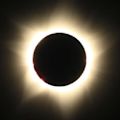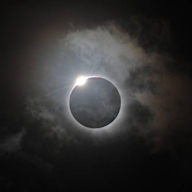Search results
A total solar eclipse can last for several hours and totality can range from a few seconds to 7.5 minutes. The longest total solar eclipse of the 21st century took place on July 22, 2009, when totality lasted 6 minutes and 39 seconds!
Apr 8, 2024 · What is a total solar eclipse? A solar eclipse occurs when the moon orients itself between Earth and the sun, shielding the solar surface from our view.
Apr 8, 2024 · On April 8, 2024, a total solar eclipse moved across North America, passing over Mexico, the United States, and Canada. A total solar eclipse happens when the Moon passes between the Sun and Earth, completely blocking the face of the Sun. The sky will darken as if it were dawn or dusk.
List of Total Solar Eclipses Worldwide Next 10 Years. Check where the eclipses are visible and if you can see them.
The table below is a concise summary of all total, annular and hybrid solar eclipses from 2021 through 2040 (excluding partial eclipses). The links in the table provide additional information and graphics for each eclipse.
The Monday, April 8, 2024, total solar eclipse crossed North America, passing over Mexico, the United States, and Canada.
Apr 9, 2024 · A total solar eclipse, which was experienced Monday by millions of skygazers in parts of Mexico, the United States and Canada, has concluded its path over North America.
Apr 8, 2024 · A total solar eclipse — nicknamed the Great North American Eclipse for its long path over North America — was visible in the sky today over parts of Mexico, 15 U.S. states and eastern...
On April 8, 2024, a total solar eclipse will be visible in the continental United States. Glimpse the full glory of the Sun’s outer atmosphere, or corona, visible only when the Sun’s disc is completely covered by the moon.
Hybrid eclipses are also known as annular/total eclipses. Such an eclipse is both total and annular along different sections of its umbral path. Eclipse magnitude is the fraction of the Sun's diameter obscured by the Moon. For annular eclipses, the eclipse magnitude is always less than 1. For total eclipses, the eclipse magnitude is always ...







